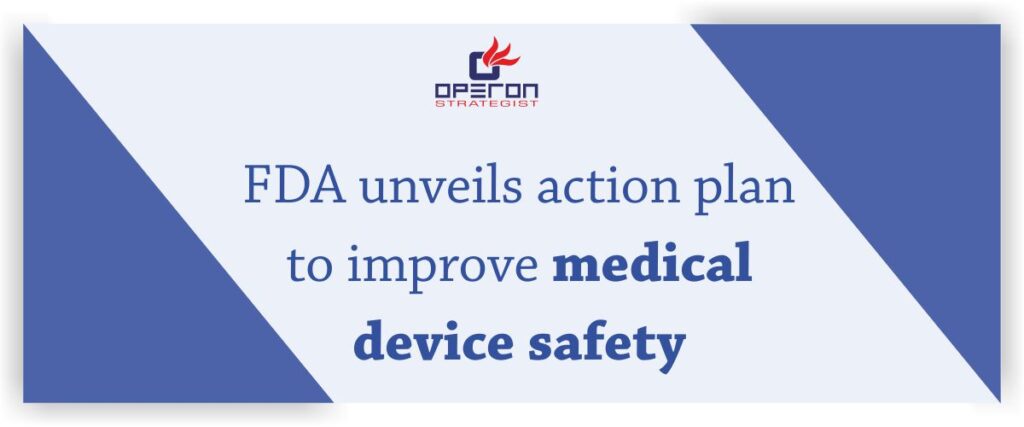The Design and Development of the product play a vital role in the total life cycle of a product and to ensure the effective and safe product in the market. The adequate design documentation helps to improvise the product performance while the product remains in the market. As per FDA data, the significant portion at about 44 % of the recalls of medical devices is due to the lack of adequate Design Controls.
US FDA 21 CFR 820.30 Design Control :
Design control states about the application of a formal methodology to be conducted for the products development activities. Design control applies to the design of the product and associated manufacturing processes. The minimum expectations are clearly laid down in 21 CFR part 820.30 design control and Clause 7.3, ISO 13485:2016. As per expectations design and development activity have to be performed and evidenced through DHF at the contract manufacturing site, Legal manufacturers site, design, and development firm as per the business module and it shall be continually maintained and upgraded.
- We assist in design controls as per FDA and ISO 13485:2016 that can be mapped to the process that works best for the organization and the product being developed.
US FDA 21 CFR 820.30 Design ControlConsultant For Medical Devices
Operon Strategist the leading medical device21 CFR 820.30 design control consultants have extensive experience with the practical implementation of design controls regulation for developing new design control processes or for making improvements to existing processes.
Read MoreWhatsApp
https://www.youtube.com/watch?v=GVhCYVGhk60
The design control initiates at the stage, where the manufacturer decides to make a product and start finding the marketed products already available in the market, we can call them as “Predicated devices”. The manufacturer is expected to create the “ Design Team” which shall have the Product designers, Regulatory expert, QA experts, representative of the user, manufacturing expert, marketing representative, the internal reviewer and the peer reviewer.
The design history file is a compilation of documentation that describes the design history of a finished medical device. The design history file is referenced in 21 CFR part 820.30 and is now referenced in the new version of ISO 13485 section 7.3.10. Design control is an FDA term and defined in FDA 21 CFR 820.30. The design control requirements for the ISO 13485:2016 standard are similar to that of the FDA.
 The well-planned and documented approach is expected while conducting the design and development(D and D) activity. The adequate “design plans” are shall be available during all stages of the Design and development, defining the roles and responsibility in the timed manner of all team members. The design plans are continually updated as the activity progresses.
The well-planned and documented approach is expected while conducting the design and development(D and D) activity. The adequate “design plans” are shall be available during all stages of the Design and development, defining the roles and responsibility in the timed manner of all team members. The design plans are continually updated as the activity progresses.
The study of the marketed products and data collected about the characteristics of the products can be used as design inputs. The design inputs are also collected from the Initial risk analysis as per ISO 14971,“ Medical devices — Application of risk management to medical devices”. Performing the usability Engineering studies as per standards, like ISO 62366 “ Application of Usability Engineering to medical devices”. The recalls happened before on similar devices is also an important study to get away from similar design flaws. All the data collected from the available studies and resources are used as “ Design Inputs”. The manufacturer shall always try to establish as much as possible the available data to create the design inputs. The design inputs shall not be ambiguous and shall be clearly defined, which helps to create adequate design outputs. It follows the philosophy of “ Garbage in Garbage out” poor design inputs creates the poor design outputs.
The product characteristics required to achieve the design input expectations are called “Design outputs”. The design outputs are normally in the form of the raw material specifications, finished good specifications, drawings, in-process controls, types of machinery and equipment required, process flow charts, vendor details etc. The “traceability matrix” shall be created to demonstrate the linkage between design input and the design outputs. During all the stages of the development, the “Design reviews” of the activities shall be performed by the team members and the peer reviewers to check if the project is being moved to achieve the user needs. The comment from the reviews will determine the changes in the plan or the design and shall be circulated to all the team members.
The adequacy of the design output against each of the design input shall be demonstrated. It can be achieved through the set of experimentation and the activity is called “Design Verification”. The design verification activity shall be done by creating the test cases for each of the design output and corresponding input. The typical example of the verification studies may be technical, physical, chemical characterization or other engineering analysis, bench testing etc. The test protocols are approved before execution and are executed and data collected.
The compilation of the data shall be done to interpret the results in the “Summary report” The report shall be reviewed to check if the design output is giving the expected design input expectations. In case, design output attributes fail to achieve the desired expectations laid down in design inputs, then it may call up for the changes in the design. All the changes shall be documented through the “design change requests” which shall be approved by all the team members. Once the change request is approved, then design outputs and/or design is changed with the aim to achieve the expectations given in the design inputs. The repeat verification is performed to recheck if the expected design inputs are being achieved.
It is necessary to verify if the device achieves the user needs before launching the device in the market for commercial use. The activity is called “Design Validation”. Design validation of medical devices is the testing process by which you validate that the device which is built works for the end-user as intended. The typical example of the validation studies may be simulated product study, clinical trials, bench testing, Animal studies, reliability studies, usability studies, market surveys etc. The studies are carried out on the production equivalent. The validation plan shall be approved and studies conducted. The studies carried out are adequately documented and reports are prepared.
The data collected during the validation activities are used for 510 (k) submission, Technical File, Device Master File etc. The risk analysis and usability studies on the final product shall be performed to know, the exact status of the designed product going and suitability of the same for commercial purpose. The output of the risk analysis and usability studies can contribute to making the “Instruction for use” (IFU). The relationship between design verification and validation can be determined in Figure 2 :
The design verification determines “If we design the product right” and design validation determines “ If we design the right product”. The compilation of all documentation “Design History File” (DHF). The DHF is the dynamic document and shall be amended as the changes in the design happen based on the market performance of the product. The Corrective And Preventive Actions (CAPA) arising from the various sources related to product performance may lead to design changes and the activity performed is amended in the DHF.
The design transfer shall be performed to the commercial manufacturing site, the activity is called “ Design Transfer”. It is the effort to transfer the “know-how” and experience gained during the design and development activity. The design transfer involves the transfer of the Raw material specification, Finished goods specifications and test methods, Test equipment, Process flow charts, manufacturing machines and utility specifications, In-process test parameters, release parameters, vendor details, labelling details, Instruction for use, Primary and secondary packaging material details etc. The document in which this is mentioned is called “Device Master record” (DMR). The relationship between DHF, DMR, and DHR is shown in figure 3:
The DMR becomes the basis to formalize the “Device History record” (DHR). The DHR provides adequate traceability for the commercial batches manufactured. In the case of the customer complaint or any adverse events, the complete batch history can be traced through DHR. The continual and deliberate efforts shall be made to collect data from users about the performance of the product and to evaluate the impact of the residual risks posed to the customer the activity is called as Post-market surveillance” (PMS). The adequate post-market surveillance will help to “Fine-tune” the design of the product and put added features to the device to improvise the device.
The design and development activity plays a vital role in the total lifecycle of the device. This necessitates the regulators and certifying bodies to have a detailed review of the design and development documentation to ensure compliance in Design Control.




